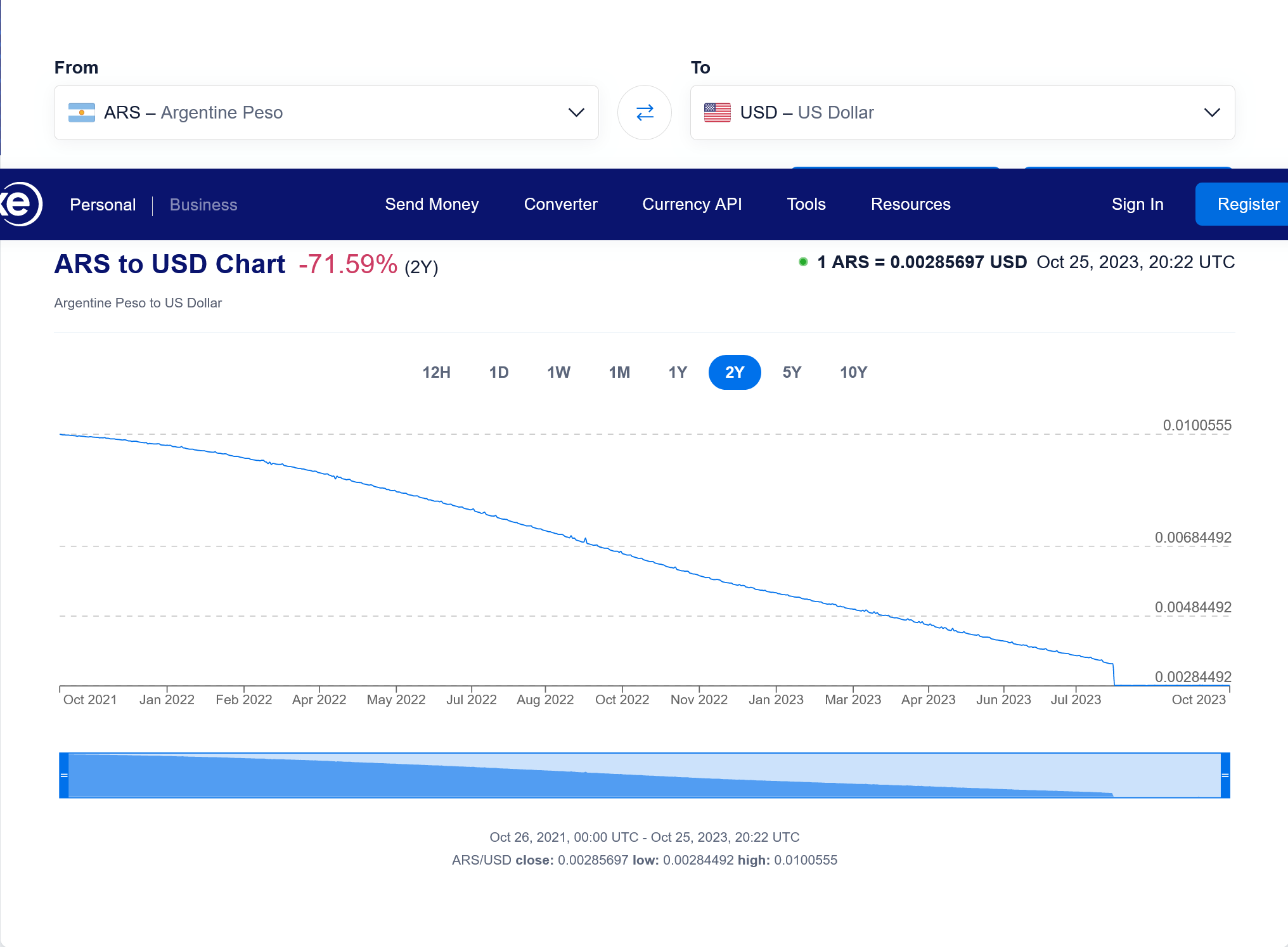Valve is dropping local currency support for Turkey and Argentina amid 'exchange rate volatility,' moving to 'regionalized USD pricing' for 25 countries
Some countries will see Steam prices go up—in others, they may go down.

Valve is making changes to Steam pricing in Argentina and Turkey that will see game sales in those countries switched from their local currencies—the Argentine peso and Turkish lira—to US dollars. The change is being made to address "exchange rate volatility" that Valve says has made it difficult for developers to set and maintain prices for their games.
Steam's system of regional pricing has long been a contentious issue. We went deep on "the weird economics behind Steam prices around the world" all the way back in 2014, and while the world has changed since then, the underlying complexities have not. Price variations from region to region are based on numerous factors, but the broad goal is fairness: Ensuring that people outside of North America and Western Europe aren't forced to pay disproportionate prices for their games.
Currency exchange rates are a big factor in determining regional prices, and that's where this switch to US dollars in Turkey and Argentina comes into play.
"Exchange rate volatility in Argentina and Turkey in recent years has made it hard for game developers to choose appropriate prices for their games and keep them current," Valve explained. "We have heard this loud and clear in our developer meet ups and round table chats. In addition, we have had a hard time keeping Steam payment methods up and running in these countries/territories due to the constant foreign exchange fluctuations, fees, taxes, and logistical issues.
"Pricing games in USD for Steam customers in Argentina and Turkey will help us provide greater stability and consistency for players and partners, while also enabling us to continue to offer a variety of payment methods to Steam users in those countries/territories."
"Volatility" in this case appears to be a polite way of saying that the currencies in question have all but collapsed. The past few years have seen a dramatic devaluation of both the Argentine peso and the Turkish lira:


In practical terms, what this means for developers is that prices they set in, say, March 2023 are almost meaningless now: They have to continually increase the cost of their games to account for the reduced value of the local currency. (Or, I suppose, accept that they're going to take a bath on it.)
Keep up to date with the most important stories and the best deals, as picked by the PC Gamer team.
Signs of trouble with both currencies first emerged in 2022, when Valve released a new recommended regional pricing guide for developers—essentially a tool to help them quickly determine regional prices for their games. The recommended pricing for most regions went up to some extent: In Canada, for instance, the recommended cost for a game that sells for $59.99 in the US increased from $68.99 Canadian to $77.99, a jump of 13%. But the Argentine peso and Turkish lira were wild outliers: Recommended pricing in lira went up 454%, while peso pricing jumped an astonishing 485%.
The switch to US currency in Argentina and Turkey will see them included in a new "regionalized USD pricing" bloc that includes 25 countries across two regions, Latin America and Middle East/North Africa. The other countries included in the new pricing regions did not previously have local currency support. Here's how they break down:
LATAM
Central America:
- Belize
- El Salvador
- Guatemala
- Honduras
- Nicaragua
- Panama
South America:
- Argentina
- Bolivia
- Ecuador
- Guyana
- Paraguay
- Suriname
- Venezuela
MENA
Middle East:
- Bahrain
- Egypt
- Iraq
- Jordan
- Lebanon
- Oman
- Palestine
- Turkey
- Yemen
North Africa:
- Algeria
- Libya
- Morocco
- Tunisia
- Sudan
Valve said prices in some countries being switched to US currency will go up, while others may see a reduction, "depending on how games were priced on Steam prior to this change." It's ultimately up to individual developers to set their prices on Steam.
The change to US currency will take place on November 20. Any Steam user in those countries with money in their Steam wallet will have it converted to US dollars at the current exchange rate; in-game transactions in those regions will also switch to US currency, and any existing subscription services on Steam will continue uninterrupted, but will have to be renewed in US dollars when the time comes.

Andy has been gaming on PCs from the very beginning, starting as a youngster with text adventures and primitive action games on a cassette-based TRS80. From there he graduated to the glory days of Sierra Online adventures and Microprose sims, ran a local BBS, learned how to build PCs, and developed a longstanding love of RPGs, immersive sims, and shooters. He began writing videogame news in 2007 for The Escapist and somehow managed to avoid getting fired until 2014, when he joined the storied ranks of PC Gamer. He covers all aspects of the industry, from new game announcements and patch notes to legal disputes, Twitch beefs, esports, and Henry Cavill. Lots of Henry Cavill.

